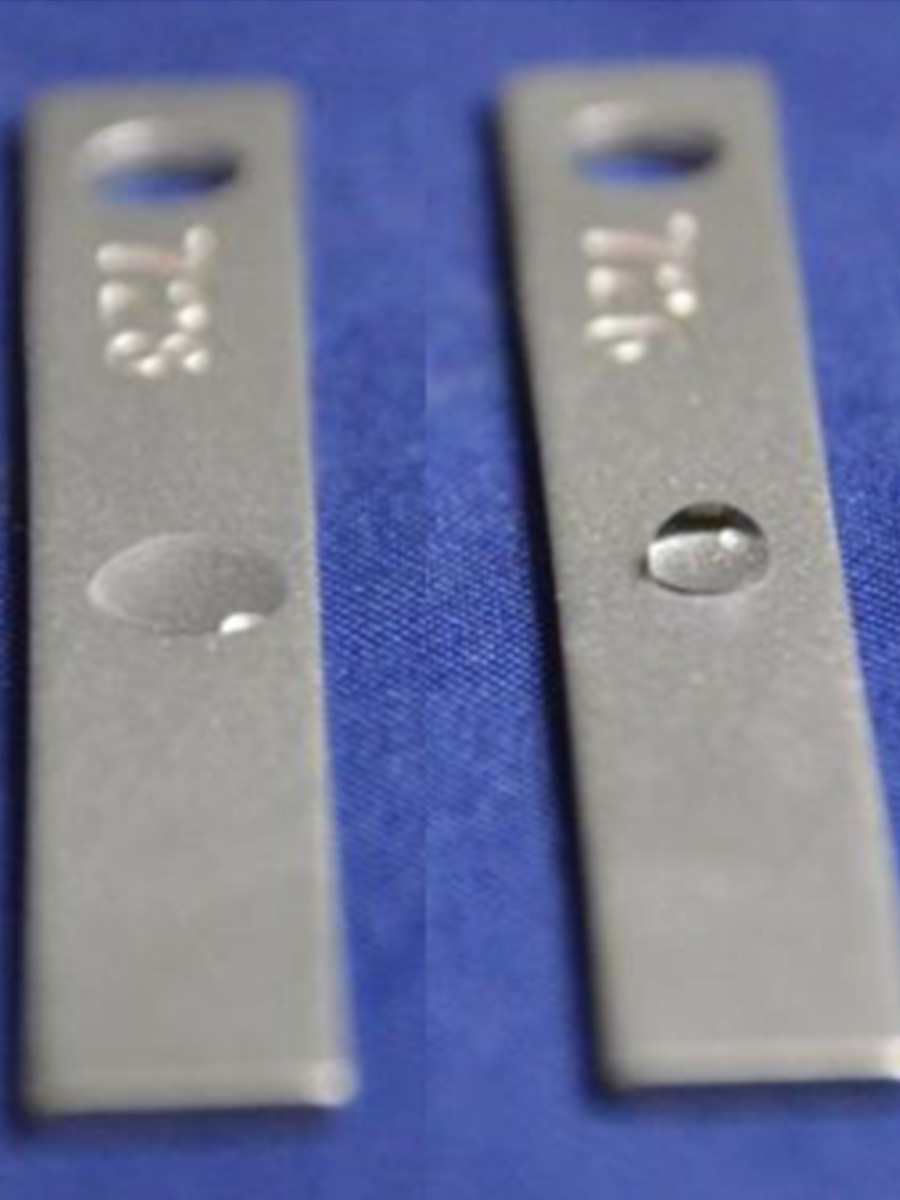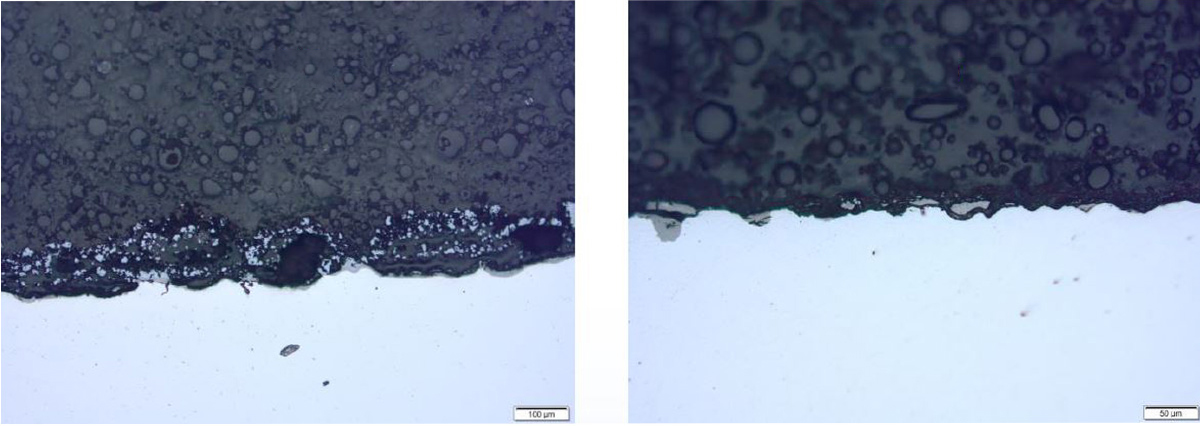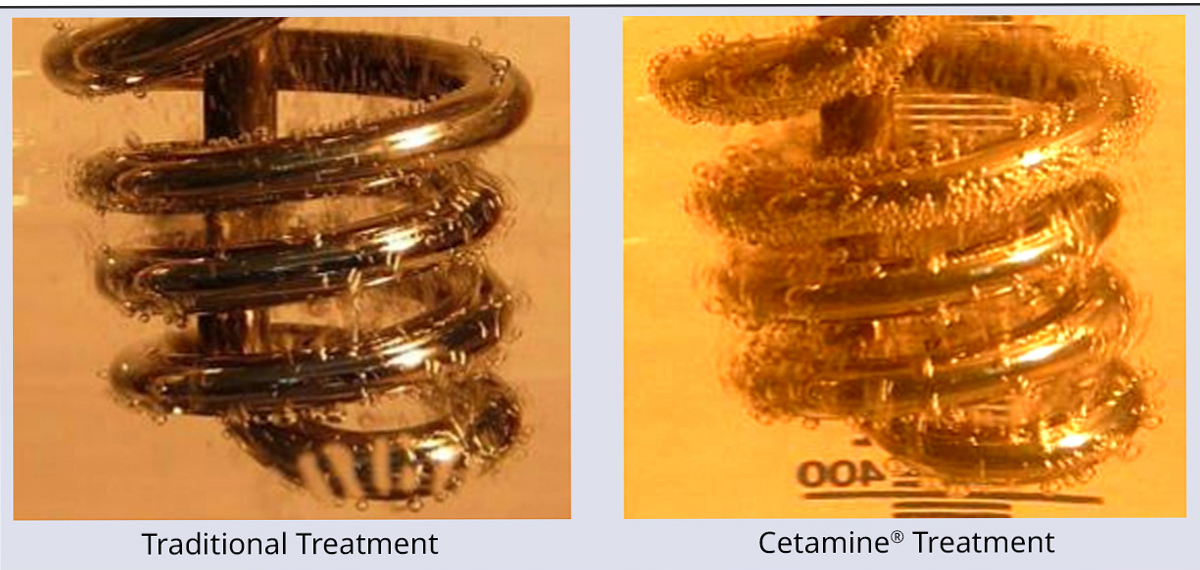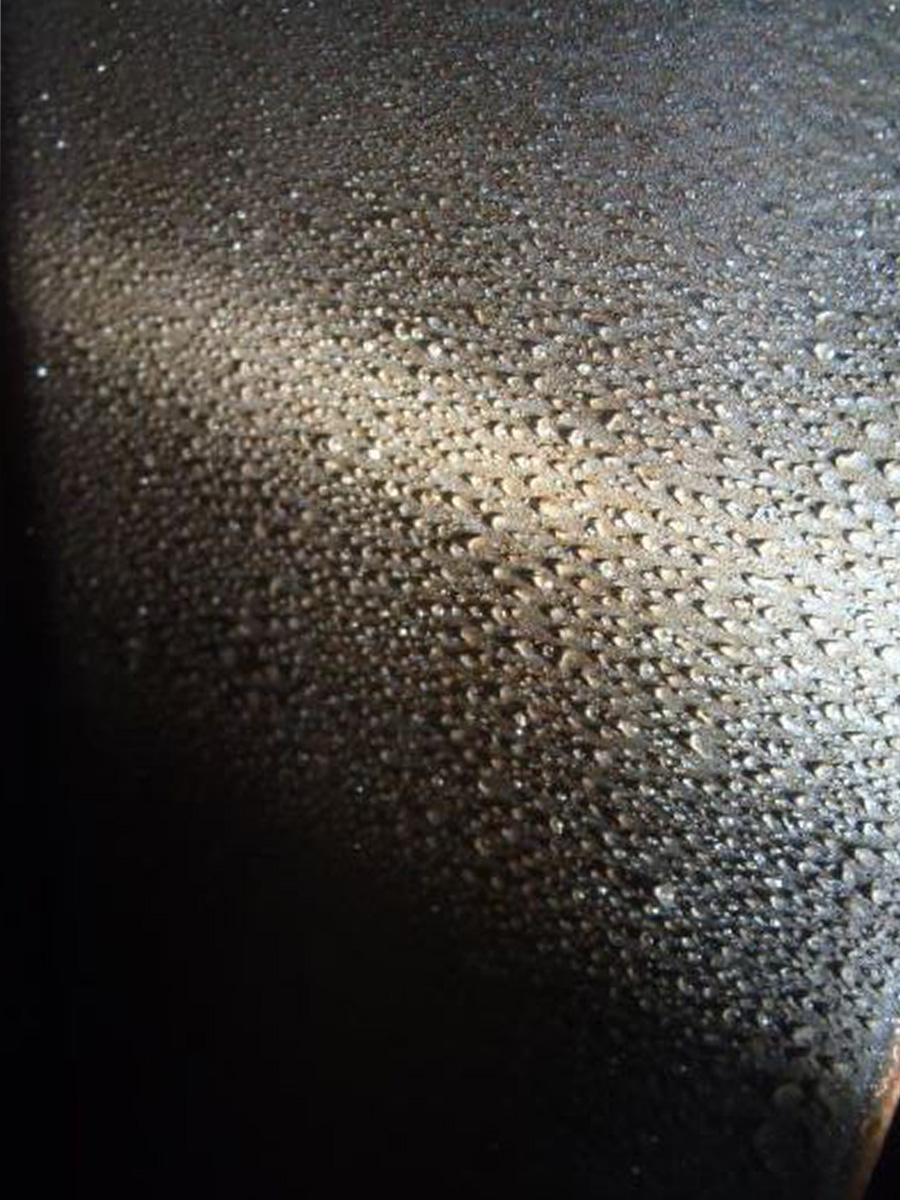Depending on your boiler or heating system, a one percent reduction in fuel used to heat water could mean likely saving tens of thousands of dollars over a year of operation. As well as it would curtail hundreds of tons of CO2 emissions from burning fossil fuels. Preserving longevity of critical industrial boiler equipment while striving to reduce total cost of ownership continues to be a major driving force of technological advancements within the industrial water treatment market. Not only are boiler assets costly but they can be vital for plant output with downtime and inefficiencies equating to losses in production and money. By far, the most expensive part of boiler operation is fuel usage. It is imperative that heat transfer surfaces stay clean in order to maximize heat transfer efficiency. Scale buildup acts as an insulator and decreases heat transfer efficiency, which will lead to a significant increase in fuel consumption to generate the same amount of steam when compared to clean heat transfer surfaces. Corrosion can also be detrimental to efficiency and longevity of equipment. Corrosion in any form can damage system components and can ultimately lead to premature failures. The resurgence of film-forming amine (FFA) comes from the revision of the technology, the new steps in the United States, and the expansion of the water treatment applications.
For many years, traditional water treatment programs have been implementing a multistep treatment approach that includes phosphates, polymers, sulfites, and inorganic chemistries. These protect against dissolved oxygen pitting, generalized corrosion, scale, and deposits. Until very recently in the United States market, not much had changed on this front, whereas the overseas markets have been vast in their research and development efforts and advancements in the film-forming amine technology with great success.
 |
|
Corrosion coupon comparison demonstrates FFA hydrophobic effect. Untreated coupon on left, FFA treated coupon right.
|
Filming Amines
Film-forming amine (FFA) technology first made its introduction in the 1960s with octadecylamine (ODA). This first implementation of filming amines in water treatment was primarily used in instances where pH neutralization was not enough to prevent condensate system corrosion. Often times, excessive air infiltration due to system design and mechanics would lower pH to an unsatisfactory level. An example would be condensate systems with air-induced condensate return pumps because neutralizing amines would either be cost-prohibitive or deemed ineffective to counteract the added corrosivity of the introduced dissolved gasses. In particular, ODA is often remembered for the “gunk balls” and plugging issues if high levels of iron oxide were present or product was overfed. Since then, there has been a resurgence in water treatment applications of film-forming amines with vast development and advancements to this classification of compounds to overcome the problems of the past.
How Film-Forming Amines Work
Film-forming amines are long-chain fatty compounds that lay a microscopic film on surfaces and create a hydrophobic or water-repelling barrier. This covers all metallic surfaces in the treated system and provides a barrier between system metallurgy and water with all its problem-causing impurities, such as mineral salts, oxygen, carbon dioxide, and carbonic acid.
 |
| Cross-section micrograph of evaporator tube surface. Removal of loose deposits after use of FFA treatment. |
Like neutralizing amines, filming amines are also volatile in boiler systems. This allows for filming amine to distribute with the steam and to be transferred back through the condensate return lines to protect the whole system. Traditional boiler water treatment programs often use three or four treatment products for full-system protection. With an FFA-based treatment, this can be reduced to one product, helping to decrease the amount of chemical handling required and feed equipment, which promotes safety and reduces maintenance.
Once this protective barrier is formed, it remains intact even after the FFA feed has stopped. If the dosage falls below the required level or is interrupted for a short period, then no immediate corrosion occurs, making it resilient to system upsets. In addition to corrosion protection, filming amines keep heat transfer surfaces clean of scale and deposits, which optimizes heat transfer rates and potentially reduces fuel usage. Often, there is an expected and desired cleaning effect when transitioning from a conventional treatment program to an FFA if iron oxide is present. FFAs work to stabilize metal surfaces, penetrating and removing loose corrosion byproducts. Lab studies that use photoelectron spectroscopy and Ellipsometry show an improved boiler water nucleation with increased steam bubble frequency, reportedly enhancing heat transfer efficiency and reducing fuel consumption.
 |
|
Boiling nucleation comparison. Phosphate program on left, FFA program on right.
|
Impact on Water Usage
Hundreds of real-world applications have also shown that cycles of concentration in the boiler can be increased when applying FFA-based boiler treatment. This reduces the amount of boiler water blowdown necessary to control boiler water concentration, leading to more savings in fuel, water, and treatment product usage. Certain FFA formulations (ex. Kurita Cetamine®) contribute less conductivity since it is not necessary to maintain high levels of traditional water treatment chemistries. Increasing cycles of concentration also improves environmental stewardship by reducing CO2 emissions and reducing water discharge.
Off-Line Protection
Due to their film tenacity, FFAs preserve assets during discontinuous operation, unexpected shutdowns, and layup periods. Boiler operation can vary depending on plant demand, and layup duration can sometimes be unknown. An anticipated short-term layup can quickly become a long-term layup as was seen during the COVID-19 pandemic. Systems treated with FFA do not need additional treatments before a layup or shutdown event. An established FFA on metal surfaces inhibits corrosion and pitting activity during offline operation in both wet and dry layups. This leads to a reduction of corrosion product transport upon startup and minimizes the potential for under-deposit corrosion. Additionally, FFAs reduce or may even eliminate the need for nitrogen capping or dehumidified air circulation, reducing labor requirements of operating staff.
 |
| Clean and hydrophobic surfaces during LP turbine layup/inspection. |
Where Filming Amines Excel
New construction in recent years has seen a rise in installation of aluminum boilers and heat exchangers in heating systems. Aluminum has a much higher heat transfer than the steel-fabricated systems of previous designs—therefore more efficient. However, aluminum tends to corrode over a pH of 8.5, and typical steel water treatment products will not protect these assets since they buffer water above a desirable range. Film-forming amine water treatment products have proven to meet the shift in design and metal selection. FFA molecules have an affinity for all metallurgy types, making it ideal for systems containing aluminum and—particularly— mixed-metallurgy systems where traditional treatments may not protect every surface. One notable industry example combining the benefits of aluminum and mixed metallurgy protection with extended layup is injection molding process water loops. In these systems, highly specific metal molds are used unpredictably and preserving their surface integrity while in and out of use is of utmost importance.
Summary and Conclusion
The resurgence of film-forming amine technology within the United States industrial water treatment industry brings with it many interesting and exciting advancements for the future of industrial boiler water treatment. These advancements have been researched and thoroughly studied in both lab scale applications as well as full-scale pilot systems at partner sites. FFAs provide a multitude of benefits that include increased asset preservation during both operation and layup while reducing fuel operating costs, reducing water use, and decreasing chemical treatment demand. The resurgence of film-forming amine comes from the revision of the technology, the new acceptance in the United States, and the expansion of water treatment applications. FFAs harmonize water treatment by delivering optimal results and overall lowering the cost of ownership for customers while conserving natural resources for a better, more sustainable world.
Sources:
Klin Rodrigues, Ph.D., and Fred Gadberry, Ph.D. “Long-Chain Fatty Amines and Their Derivatives for Corrosion Protection in Water Treatment Applications.” The Analyst. Fall 2019.
Nathan Hardy and Jim Lukanich, CWT. “Filming Amine Use in Multi-Metal Hot Water Systems.” The Analyst. Technology Supplement 2018.
Iva Betova, Martin Bojinov, Timo Saario (2014). “Film-Forming Amines in Steam/Water Cycles—Structure, Properties, and Influence on Corrosion and Deposition Processes.” VTT-R-03234-14, pp. 1–41.
Three Utilities Demonstrate Promising Alternative Layup Technique. EPRI 3002002547. Feb 2014.
EPRI 2006, Steam generator progress report, Revision 2006, October 30

